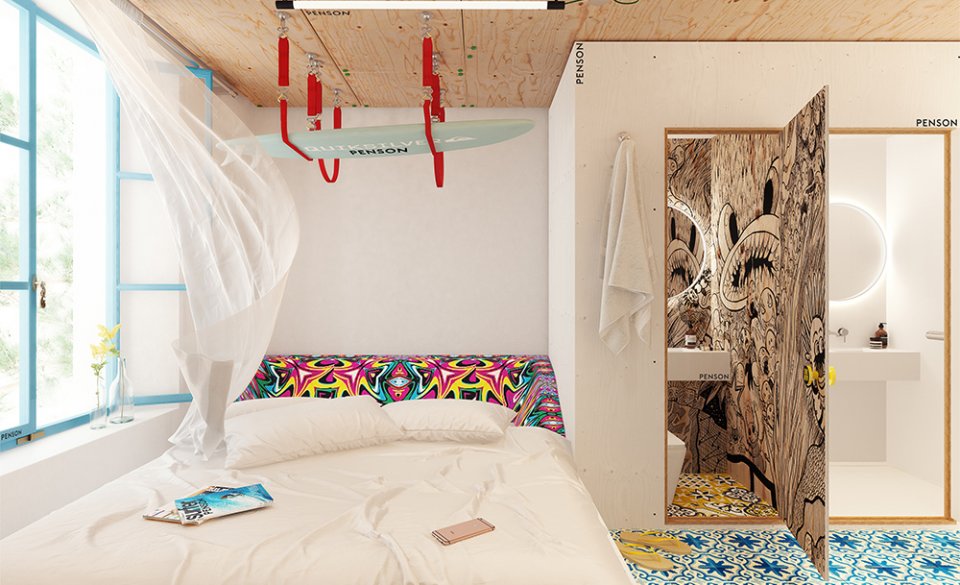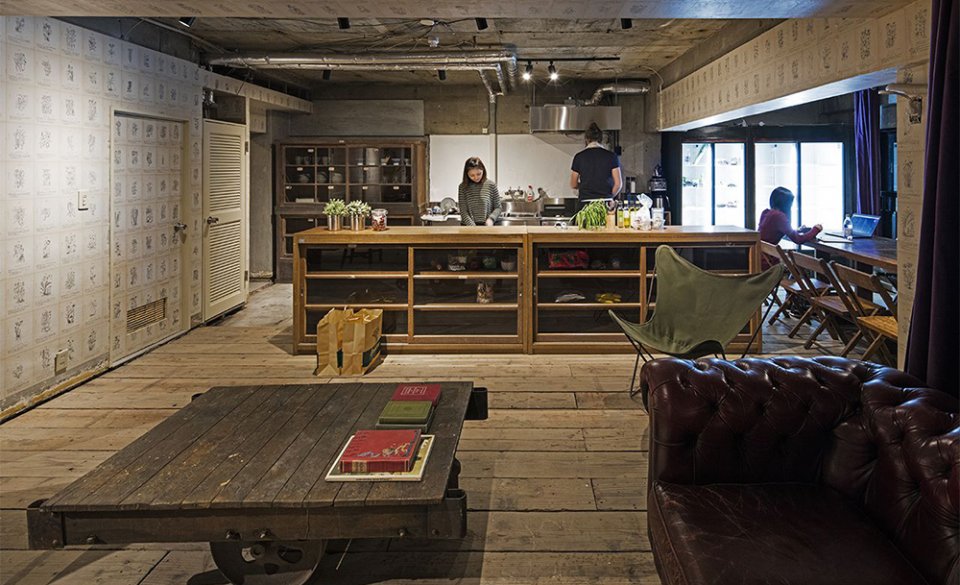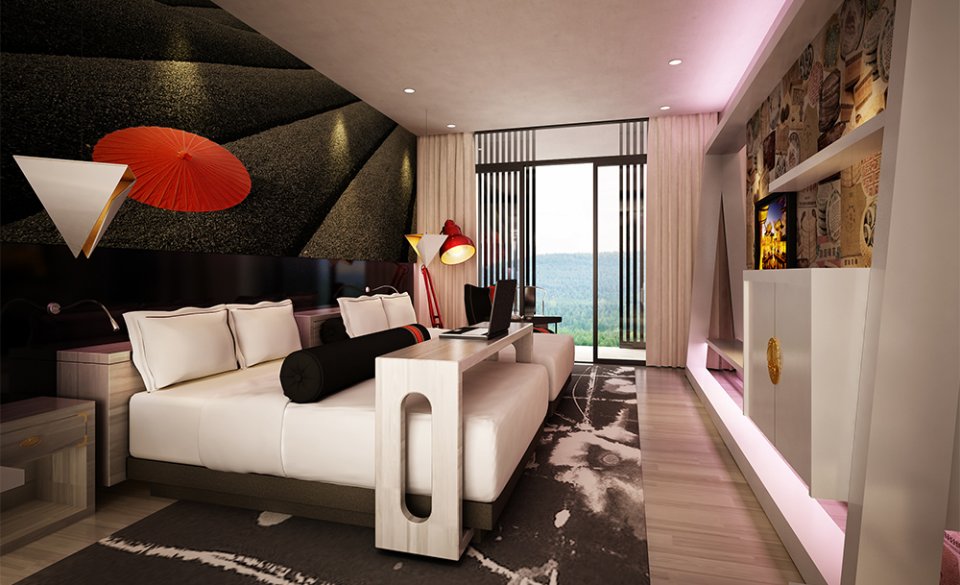Blurring the lines between house and hotel more than sharing economy accommodation providers ever could are a new breed of co-living spaces that place emphasis on community rather than amenities. Here are some places to consider the next time you are looking for a place to stay for a few days, months or even years.
New Age Kampungs


Jo&Joe
More than the sum of its parts—a millennial hotel, hostel and apartment combined—is French hospitality giant Accor’s first foray into the co-living segment. Jo&Joe defies easy definition by taking lessons from existing shared living apartments and adding to that their decades of experience running hotels. Imagine colorful bunking spaces for small groups of various sizes and, of course, a central communal area designed for guests, locals and staff to mingle. Its first property just opened in surfer’s haven Hossegor, France.


Podshare
Not just a co-living hostel, but also a co-working space, is Los Angeles-based PodShare, one of the first to have explored the idea of social traveling back in 2012. It took the idea of accessibility (rather than ownership) proselytized by the sharing economy, and the interpersonal divide galvanized by social media, and created a physical social network and co-living chain of properties ahead of its time. Today, PodShare has four properties found around Los Angeles, where travelers, startup founders and other like-minded individuals all conglomerate.


Roam
If you’ve always wanted to live and work somewhere else in the world, Roam, also a co-live-and-work concept like PodShare, is your best bet. It has properties in Miami, Bali, Tokyo and London at the moment, with a San Francisco one in the works. Rather than sleeping pods, Roam comes equipped with private bedrooms and bathrooms, while the kitchen, pool, laundry, work, and event areas are shared. They even offer support for travelers looking for remote work, in the form of a jobs board.


9floor
While falling more in the category of co-housing rather than co-living (since they prefer longer-term residencies of over six months), the idea remains the same at Taipei-based 9floor—live, work and play with like-minded individuals in a home away from home. You can stay for shorter periods, but the fee will be higher. Since starting in 2014, 9floor now has over 12 co-living apartments available throughout the Taiwanese capital, each offering a different community mix.


Zoku
The rave reviews for Zoku are well-earned. Rooms here, mostly loft units, are space-efficient, meaning they may not be the most spacious, but are designed well enough that you have everything you need—bed, table, kitchenette, fridge, microwave and dishwasher—and yet not feel cramped. It is more like a co-living apartment setup here, with a large communal living room being the connecting hive for travelers and those dropping in to work together or have meals. The food here, served at the Living Kitchen, is a big draw for many locals, both for its affordability and ability to satisfy discerning palates.


Share House Nagoya
With its focus on encouraging interaction between travelers and locals, this Nagoya-based co-living setup is best suited for those looking to deeply immerse themselves in Japanese culture over a minimum stay of one month. Like 9floor, many of its residents are actually working locals looking to broaden their cultural exposure by having foreigners as co-living mates. It currently has 27 shared houses (some female-only) spread throughout the city, with more opening regularly due to great demand.


Lyf
Lyf, pronounced ‘life’, is local serviced residence owner-operator Ascott’s debut attempt at co-living spaces. Unlike conventional serviced apartments, Lyf properties will be run by millennials (who may be residents, too) who take on roles such as community manager, city guide and bar keep. Again, community plays a big role here, and every area, including the foosball table-equipped laundromat, is designed to encourage mingling. No Lyf properties exist yet, but you can check out the show lab they have set up at Singapore Management University to test its co-living concepts. The first Lyf will be born in Shenzhen, China in the first half of 2018, while Singapore will be getting two—the Lyf Funan Singapore, in 2020 and the Lyf Farrer Park Singapore, in 2021.
Anti-social Social Hotels
Here are some places where you can enjoy the creature comforts traditional hotels provide, while still getting your feet wet with some form of co-living.

Tru By Hilton
Rethinking the way millennial hotels work is Tru by Hilton, which makes a splash by having cool communal spaces and a lobby area that is not dull and drab—it is a central gathering point for guests too, much like what co-living spaces do. Expect things like shared desking, a social media wall, board game tables and a 24/7 snacks and drinks shop, all centrally located and done in an effort to encourage socializing. The first Tru just opened in Oklahoma City in Jun 2017. There are plans to open many more across the U.S.

Dhawa
Singapore’s own Banyan Tree Hotels & Resorts introduced its first millennial leaning brand, Dhawa, just last year. It isn’t a midscale brand however, unlike most hotels in the category, and takes on a luxurious, designer aesthetic more in line with modern boutiques, but still with an approachable price point. What makes it different, besides the design, is its communal space found on every floor that lets strangers meet and chat over complimentary DIY refreshments like ice-cream, coffee and snacks. The first Dhawa opened, surprisingly, in Cayo Las Brujas, Cuba last year. Plans for one in Bo’ao, and Guiyang, both in China, are in the works.

Moxy
Of course the largest hotel chain in the world has its own take on the millennial accommodation offering. Marriott’s Moxy line of hotels is chic, caters to the young at heart, and is usually found in cities with a nightlife scene. Again, much of the action takes place at the lobby, where you can grab a bite and a cocktail while pitting yourself against people you just met in a round of Cards Against Humanity or chess, anytime of the day. Milan was where the first Moxy opened, and the brand has since sprouted all over Europe in cities like Berlin, London and Vienna.

CitizenM
Boasting more personality than some people is the uber cool CitizenM, a Dutch hotel brand which first took root in Amsterdam before expanding globally to places like Glasgow, Rotterdam, New York and, closer to home, Taipei. Its first property, opened way back in 2008, already featured the common living room many of the big boys are now trying to emulate. Even today, CitizenM is still revolutionary in the way it redefines hospitality with self-check-in systems, no in-room mini-bars, no restaurants and a 24/7 canteen offering full meals, snacks, alcohol and a barista who doubles up as a local guide.





